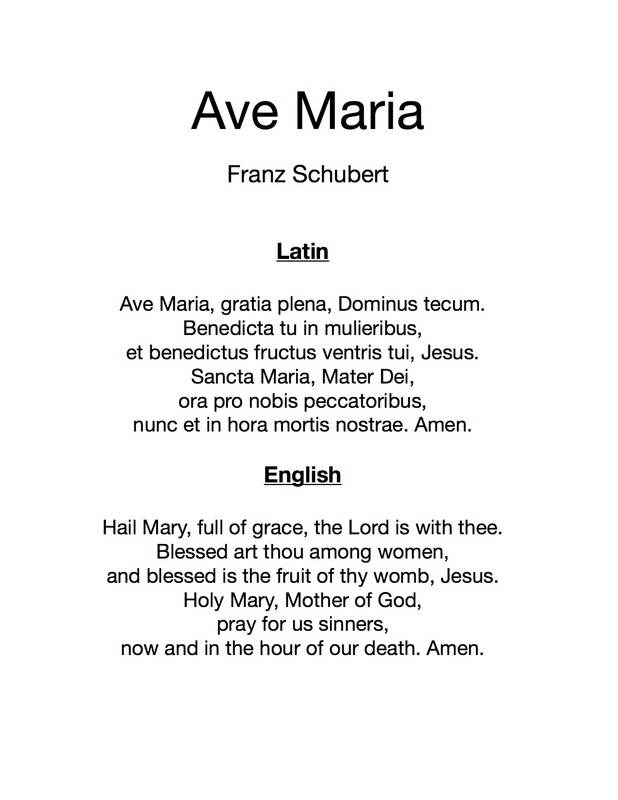



Brahms and Edward Elgar composed their versions of “Ave Maria” in 18, respectively. Anton Bruckner released multiple versions of the song between 18.Gounod’s version has been used multiple times in popular culture. Charles Gounod published his version in 1853 under a different title of “Meditation sur le Premier Prelude de Piano de S.He had changed the words of the song to what we know of it now, being the prayer of “Hail Mary”. Franz Liszt made two versions of “Ave Maria”, with the first written in 1846 and second in 1852.In 2020 Christian Aguilera sang it at the memorial service of NBA great Kobe Bryant. Kennedy.īeyoncé dropped her own rendition of “Ave Maria” on her 2008 album “I Am… Sasha Fierce”. It has also been notably featured in other old-timey classic movies such as “Bride of Frankenstein” (1935) and “Going My Way” (1944). Also interesting to note is that Luigi Vega performed this song in 1963 at the funeral of US President John F. This song has been famously covered in Disney’s 1940 animated classic “Fantasia”. The official release date of “Ave Maria” has been noted as 6 November 1852. It is one of seven songs, including the first two songs of Ellen, which Schubert wrote that were set upon “The Lady of the Lake”. The writer of this song was based on a poem entitled “The Lady of the Lake” (1810) by Walter Scott. And it ultimately being called by this title is due to the fact that said phrase is used prominently throughout the tune. It went on to be popularly referred to as “Ave Maria”. The term Ave Maria, when translated from Latin into English, reads as Hail Mary. The proper name of this song is “Ellens Dritter Gesang” or “Ellens Gesang III”, which translates from German as “Ellen’s Third Song”.


 0 kommentar(er)
0 kommentar(er)
